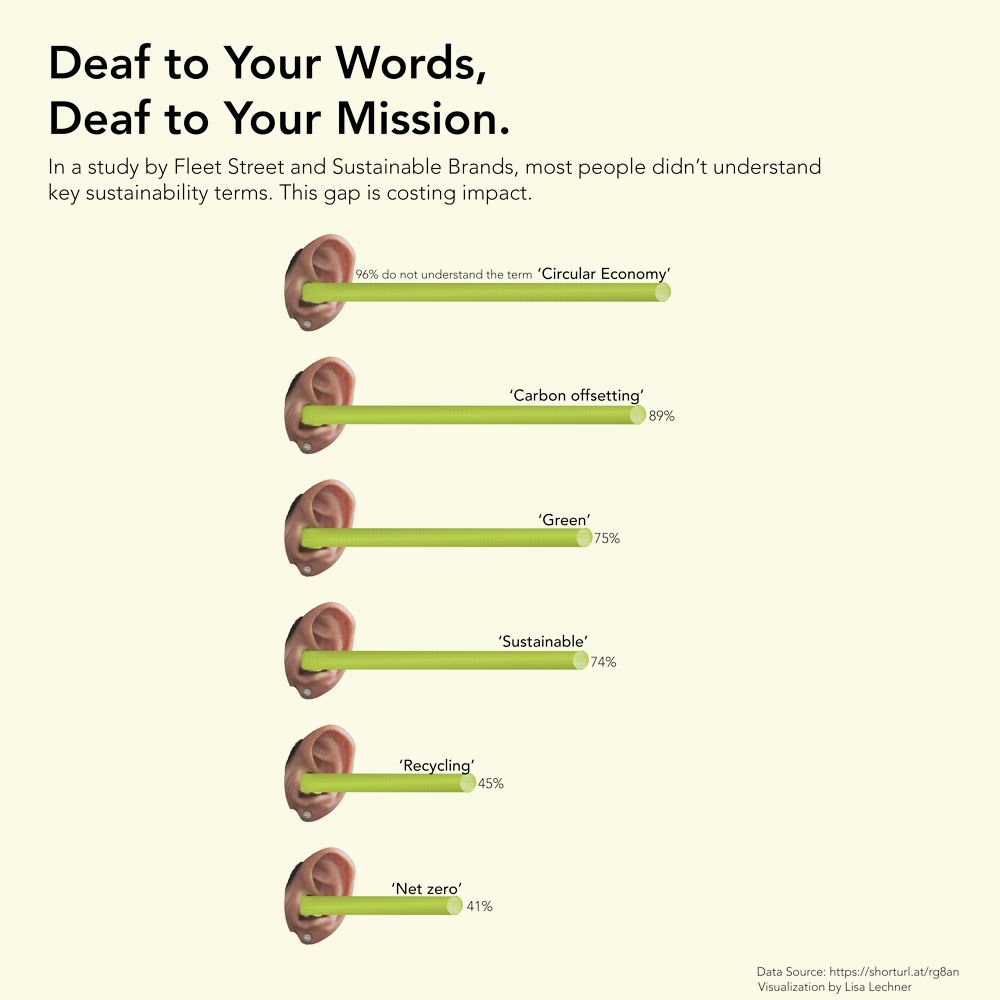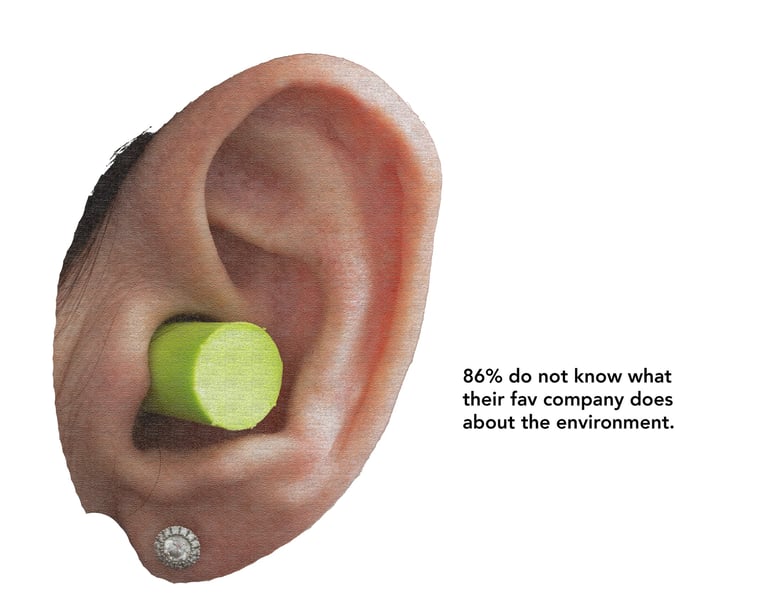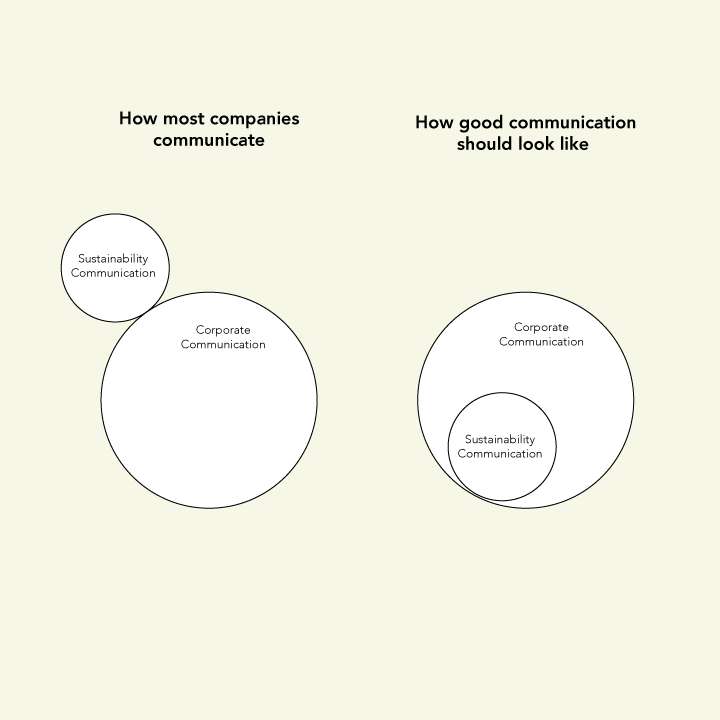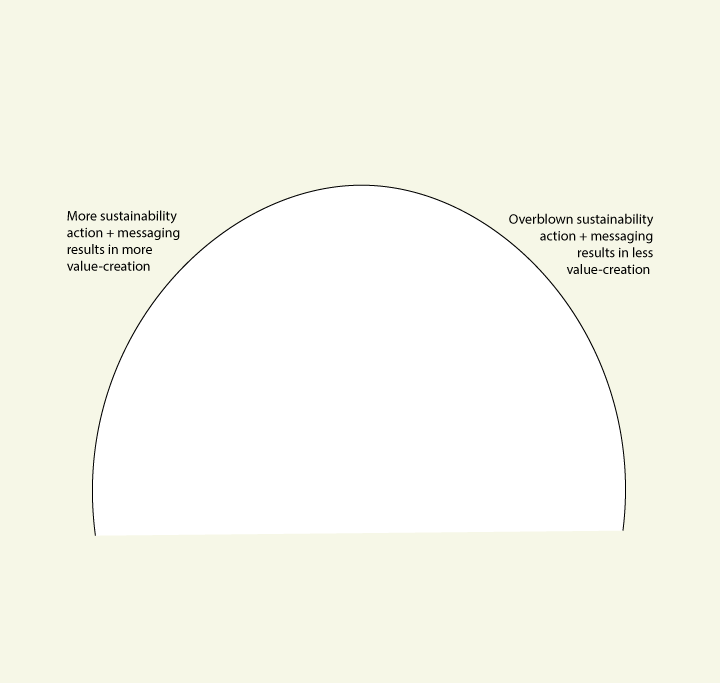You care, they don’t listen. Why 90% of corporate sustainable communication fails.
Most corporate sustainability communication fails because it is disconnected, vague, and uninspiring. Instead of weaving sustainability into the core brand story, companies treat it as a separate, compliance-driven exercise. They use generic language, avoid specifics, and rarely show real impact. Fear of greenwashing keeps them from using the data that could make their message credible and compelling. While marketing is bold, targeted, and built on storytelling, sustainability communication often feels flat and forgettable. The result: stakeholders neither understand nor connect with it. The fix is clear—bring sustainability into the heart of the brand, ground it in concrete data, and tell it with the same clarity and emotional pull as any strong marketing campaign.
Lisa Lechner
8/15/20252 min read


2. All Talk, No Proof
“Eco-friendly” means nothing without a benchmark.
Show impact. Compare your process to the industry standard. Show what one product, one share, one choice changes — both for the planet and the balance sheet.
Here’s the kicker: 46% of German executives see sustainability as just a marketing tool. Only 15% see it as a value-creating force. Yet the research is clear — done right, it is value-creating. A 2010–2024 meta-analysis found a positive link between sustainability practices and financial performance (Khamis et al., 2025). But action alone isn’t enough — communication is the bridge (Khanchel & Lassoued, 2022). If you don’t tell your story, the financial upside stays hidden.
3. Vague Language Kills Interest
Vagueness might feel safe from greenwashing claims — but it’s also boring.
Concrete beats blurry every time.
If you base your story on hard data, you remove the greenwashing risk. And you avoid overtalking sustainability — which research shows can actually backfire (Reppenmann et al., 2025).
Most companies talk about sustainability like it’s a side hobby.
No wonder no one listens.


It’s “good manners” now to publish a sustainability initiative.
But ask consumers or stakeholders what their favorite brand actually does — you’ll get blank stares.
Even worse: many don’t even understand the basics. Words like green, sustainable, environmentally friendly feel safe to you — but to your audience, they’re vague noise.
So why does sustainability communication perform so miserably?
1. Two Stories, No Connection
Corporate communication tells the company’s identity.
Sustainability communication? Often generic fluff. Two strategies, two purposes, two disconnected stories.
Your brand voice is sharp in corporate — but fuzzy and average in sustainability.




4. Compliance Over Inspiration
This one hurts.
Sustainability communication often reads like a compliance checklist.
We know exactly what makes people remember marketing messages — yet we rarely apply it here.
Marketing segments audiences. Sustainability drops one 80-page PDF for everyone.
Marketing hooks with a strong narrative. Sustainability hides in generic bullet points.
Marketing frames in terms of gains. Sustainability slips into greenhushing — doing but not saying.
I’m not saying turn sustainability into a lie. I’m saying use the same proven storytelling tools — but anchor them in truth. Bold, brave, data-backed truth.
Bottom line:
Stop treating sustainability as a polite add-on.
Tie it to your core story.
Show the real numbers.
Speak in clear, visual language.
And tell it like you’d tell your best product launch story.
Do that — and your audience won’t just hear you.
They’ll believe you.
Bibliography
Sarah Khamis, Yara Ibrahim, Hosam Moubarak (2025). Sustainability practices and financial performance: a meta-analysis approach. Journal of Financial Reporting and Accounting; [https://doi.org/10.1108/JFRA-09-2024-0678](https://doi.org/10.1108/JFRA-09-2024-0678)
Imen Khanchel and Naima Lassoued (2022). ESG Disclosure and the Cost of Capital: Is There a Ratcheting Effect over Time?. In: Sustainability 14(15): 1-19. [https://doi.org/10.3390/su14159237](https://doi.org/10.3390/su14159237)
